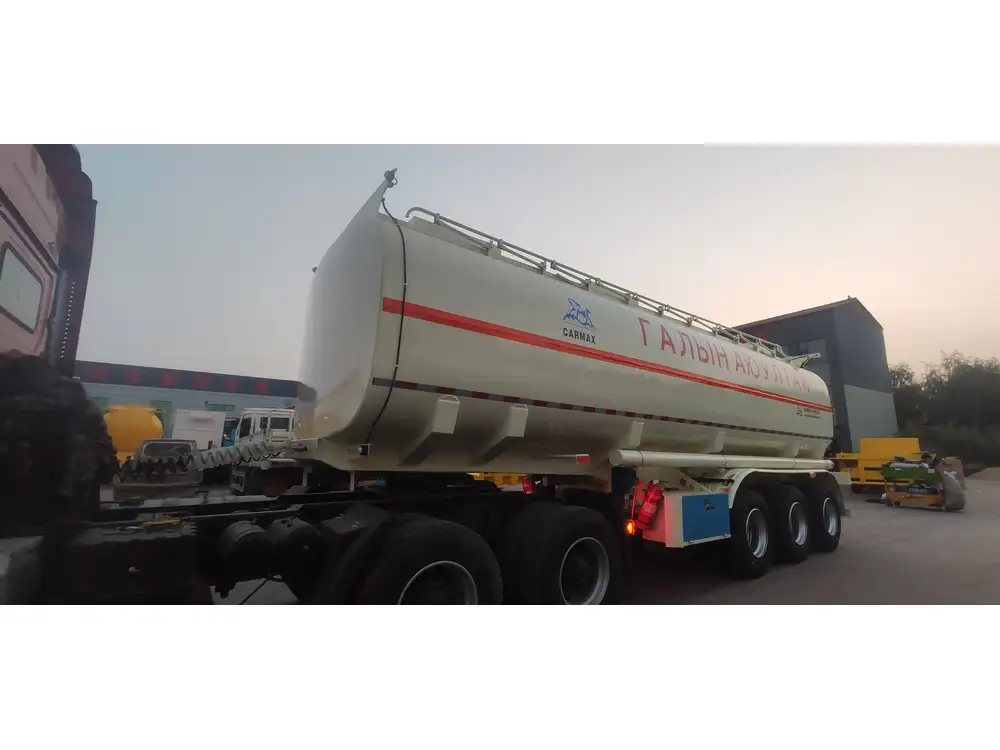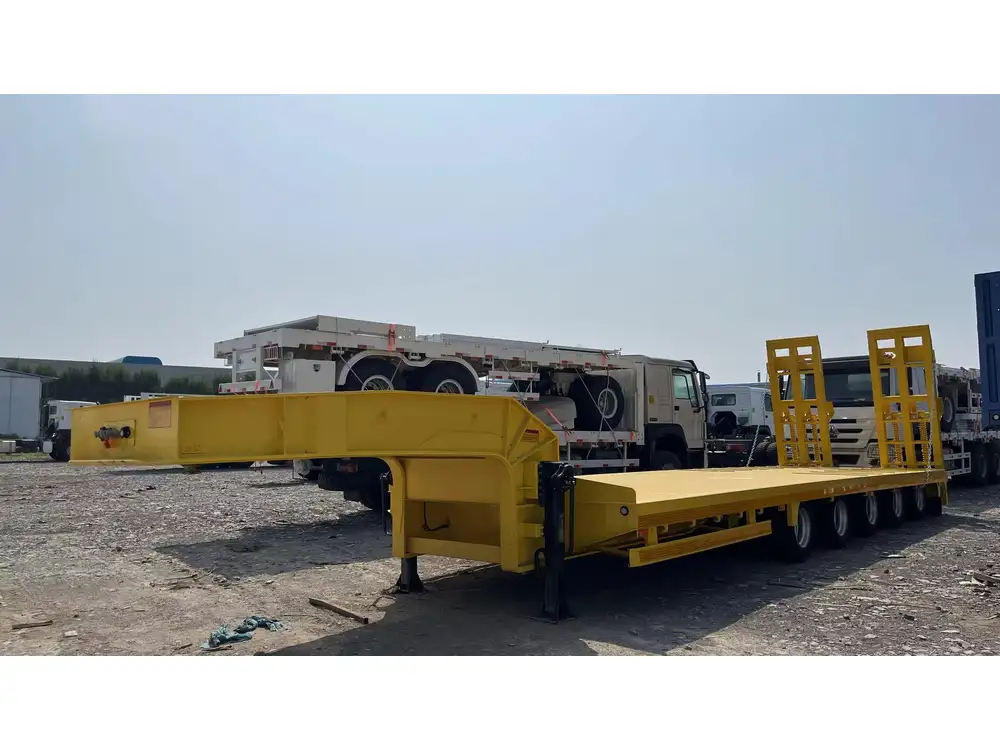Understanding Semi-Trailers: Definition and Structure
At its core, a semi-trailer is a unique type of trailer that cannot be self-supported. It is designed to be towed by a tractor unit, commonly referred to as a truck or lorry. Unlike full trailers, which have wheels at both ends, semi-trailers have a single axle at the rear, relying on the fifth wheel coupling of the tractor for support. This design allows for a significant reduction in vehicle weight, enabling enhanced fuel efficiency and greater payload capacities.
Core Structural Components
Semi-trailers are intricately designed, boasting a multitude of components that contribute to their overall functionality and durability. Here is a breakdown of the primary aspects:
| Component | Description |
|---|---|
| Chassis | The main frame of the semi-trailer, usually made of steel or aluminum, which supports all other components. |
| Axles | Typically features two to four axles, providing stability and weight distribution during transit. |
| Suspension System | Essential for maintaining ride quality and load stability. Options include air ride, leaf spring, and hydraulic systems. |
| Tires and Wheels | Function as the contact point with the road, chosen based on load requirements and surface conditions. |
| Brake System | Often air-braked, semi-trailers must adhere to stringent safety standards to ensure proper stopping capabilities. |
| Load Floor | The loading surface, which can be flat, recessed, or for specific purposes like flatbeds or refrigerated units. |
| Curtains and Sides | Depending on the type, semi-trailers may come enclosed with sides that can be removed or shifted for easy loading and unloading. |

Types of Semi-Trailers: Diverse Applications
The versatility of semi-trailers is reflected in the various types designed for specific hauling requirements. The selection of a semi-trailer should align with the specific logistics needs of operations. Here’s a closer examination of the most common types:
1. Flatbed Semi-Trailer
Flatbed trailers have a simple, flat loading surface without sides or a roof. They are ideal for oversized loads such as construction materials, machinery, and vehicles.
2. Refrigerated Semi-Trailer (Reefer)
These trailers are insulated and equipped with refrigeration units, capable of transporting perishable goods such as foods and pharmaceuticals under controlled temperature conditions.

3. Tanker Semi-Trailer
Designed for transporting liquids including fuels, chemicals, and food products, tankers often feature specialized materials and internal baffles to stabilize the load.
4. Enclosed Semi-Trailer
Also known as box trailers, these are fully enclosed to protect cargo from external elements, commonly used for general freight and valuable goods.
5. Lowboy Semi-Trailer
A lowboy is a specialized trailer designed for transporting heavy equipment and machinery, featuring a lower deck height for ease of loading and unloading.

6. Drop Deck Semi-Trailer
With a lower deck in the center, drop decks facilitate the transportation of tall freight that may not clear the legal height limits on standard trailers.
Note: Each type of semi-trailer brings unique advantages and considerations; it’s vital to assess the load, route, and regulatory compliance when selecting the right model.
Materials and Construction: Key Considerations
When evaluating the quality of a semi-trailer, the materials and construction methods used are paramount. High-strength steel and aluminum are the most common materials, balancing durability with weight. A semi-trailer built using advanced materials may contribute significantly to fuel efficiency and overall performance.
Durability and Weight
- Aluminum is lightweight but has a higher upfront cost, ideal for maximizing payload.
- Steel offers structural strength and is resistant to wear, often chosen for rugged applications.

Corrosion Resistance
Trailers must endure various weather conditions. Therefore, coatings or treatments like galvanization are employed to enhance longevity.
Regulatory Compliance: Safety and Standards
Federal and State Standards
Adherence to legal regulations, such as those set forth by the Federal Motor Carrier Safety Administration (FMCSA) in the United States, is non-negotiable. Compliance includes:
- Load Limits: Varies by state but generally should match the manufacturer’s recommendations.
- Brake Specifications: Requires regular inspections and must meet specified performance standards.
- Reflective Markings and Lights: Necessary for visibility, especially during nighttime travel.

Maintaining Compliance: Best Practices
- Conduct frequent inspections and maintenance.
- Employ a qualified professional to ensure all components are up to standard.
- Keep records of inspections and repairs for auditing purposes.
Environmental Regulations
Eco-conscious operators must be aware of regulations regarding emissions and waste management. Utilizing green logistics principles not only complies with regulations but also enhances an organization’s reputation.
Maintenance and Longevity: Ensuring Optimal Performance
To maximize the lifespan and efficiency of a semi-trailer, adopting a rigorous maintenance schedule is essential. This includes regular inspections of key components and proactive repairs.

Essential Maintenance Checklist
| Maintenance Task | Frequency | Importance |
|---|---|---|
| Tire Rotation | Every 5,000 miles | Ensures even wear and prolongs life. |
| Brake Inspection | Monthly | Critical for safety and performance. |
| Suspension Check | Quarterly | Determines performance under load. |
| Chassis Inspection | Biannually | Identifies structural integrity issues. |
Cost Management
Investing in high-quality components and adhering to a structured maintenance plan can reduce long-term operational costs. Neglecting maintenance often results in expensive repairs and operational downtime.
Technology Integration in Semi-Trailers
The traditional semi-trailer has evolved significantly due to advancements in technology. Fleet operators benefit from innovations that enhance safety, tracking, and efficiency.

Telematics and Tracking Systems
Equipping semi-trailers with telematics systems enables real-time monitoring of location, speed, fuel consumption, and maintenance needs.
Increased Safety Features
Modern trailers may incorporate electronic braking systems, collision detection technology, and enhanced visibility systems such as rearview cameras to ensure driver and cargo safety.
Conclusion: Making Informed Choices in Semi-Trailer Selection
Selecting the right semi-trailer involves understanding the specific needs of your operation, considering various factors such as payload capacity, material integrity, and regulatory compliance. Careful evaluation of trailer types, maintenance practices, and incorporating technological advancements can lead operators towards enhanced operational efficiency and a robust return on investment.
As the logistics and transportation landscape continues to evolve, staying abreast of industry developments and embracing best practices will help ensure that your fleet remains competitive and effective.
In summary, the world of semi-trailers is multifaceted, and understanding what constitutes a semi-trailer can make all the difference in your business’s success. Whether you are transporting goods locally or across borders, being equipped with comprehensive knowledge empowers fleet operators to navigate the complexities of modern transportation.



